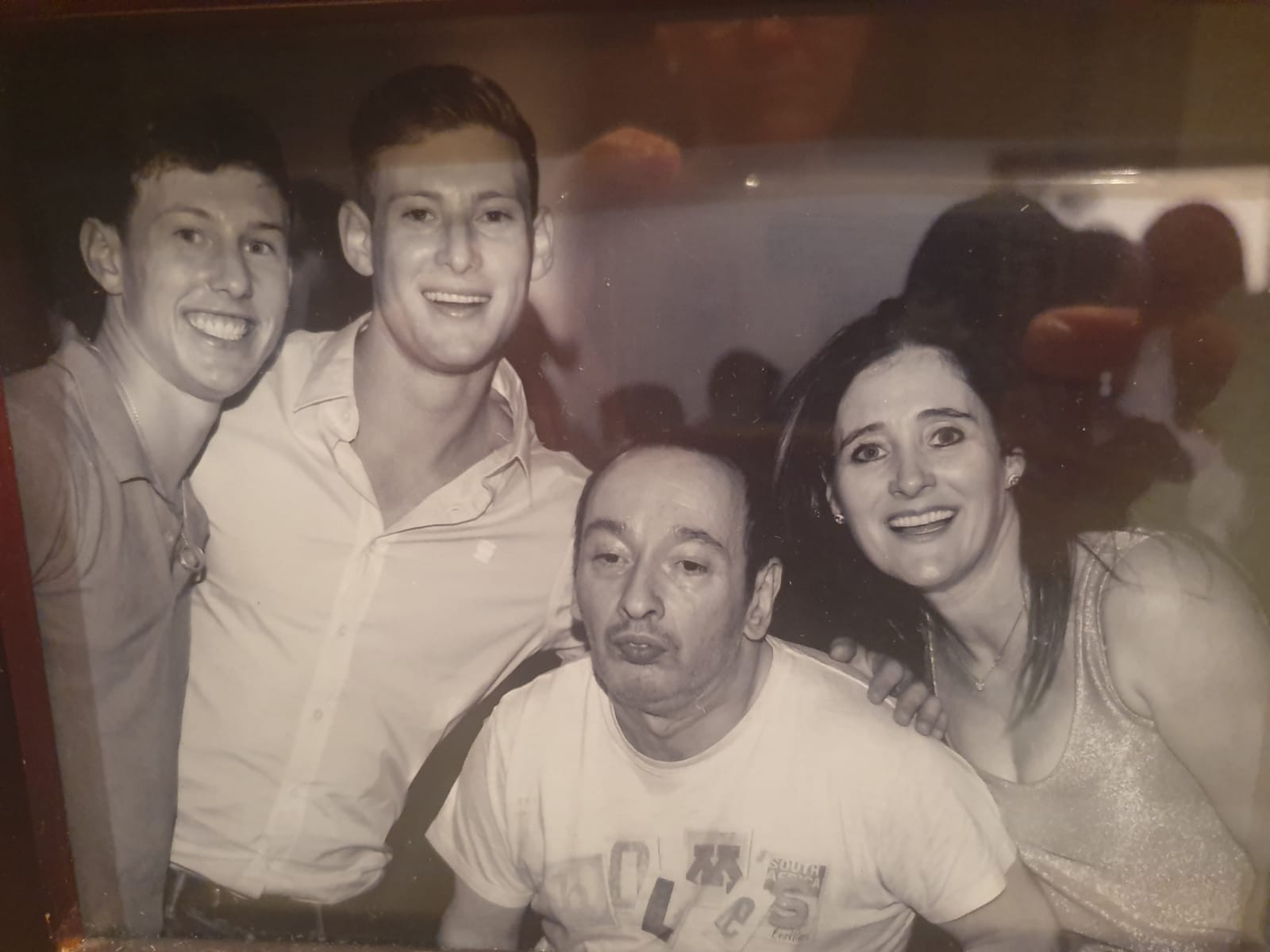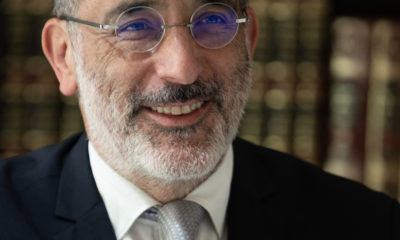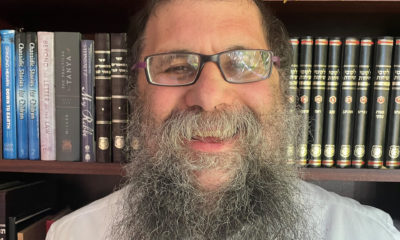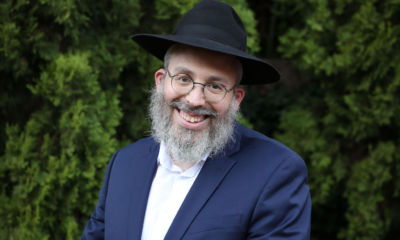
Religion

In tribute to modern-day Miriams
Published
3 years agoon
By
Mirah LangerAt the heart of the story of Exodus lies the bond between sister and brother. Indeed, “Miriam nurtured Moshe and Moshe, later in life, prayed for her healing. It’s a beautiful relationship,” says Rebbetzin Tamar Taback.
“At the age of seven, Miriam had a prophecy that her mother would give birth to the redeemer of her people. She nurtured that prophecy, trusted it, and did her part all the way through,” says Taback, the world-renowned founder of Nexus, a school of Torah study for women.
“When Moses was born, her father celebrated Miriam’s prophecy coming to fruition. However, circumstances in Egypt became so dangerous for the Jewish people, that the family elected to send Moses down the river in the bassinet to try and save his life. Now, her father rebuked her prophecy.
“Of course, Moses was well on his way towards fulfilling it, for he would soon be found by Pharaoh’s daughter. Her father could see only on the surface of the disaster; Miriam had the capacity to dig deep into the reservoir of faith and keep on believing.”
As such, Taback says, “Miriam embodies the symbol of the well: when the earth is dry and parched, you don’t see anything. The well is from deep within the earth; it’s a hidden reservoir.”
“This is the secret of Miriam. Even when the situation is dire and the earth parched, she is able to send a bucket, a cord into the deep wells of her soul, her emunah, her invigorating hope and capacity to see beyond the immediate constraints to a future.”
To Dr Franklin Kessler, his sister, Vivian Anstey, is the embodiment of a modern-day Miriam. Six years ago, she donated her kidney to him.
“My sister and I were very close from early on. So, when she decided that she wanted to donate one of her kidneys to me to improve my quality of life – actually to save my life – that relationship became even closer.”
Anstey, too, remembers a close childhood, growing up together in Bellville, Cape Town, with Kessler, who is three years older than her.
Even when he made aliyah about 30 years ago, they remained strongly connected and in constant contact as her brother continued to experience kidney deterioration.
Then a few years ago, he told her that his condition had reached the point that he would have to go on dialysis or find a donor.
Although he didn’t ask for her help, Anstey decided that that she would research the possibility of being a match.
“In retrospect, I realise that even entertaining the idea clinched the deal right there,” Anstey says.
A turning point in understanding this was when she had a conversation with a friend who is a doctor. “The first comment he made to me was, ‘Do you realise that your brother will be living with a life sentence?’ Not a death sentence, a life sentence, which basically meant that my decision would influence his life.”
It made her realise that, “I wouldn’t have been able to live with myself watching him struggle being a doctor himself and having to go onto dialysis a couple of hours every single day of his life.
“The pain and suffering that he would have gone through and which I would have endured as a bystander, wasn’t an option. Being a sister, I had a sense of responsibility.”
Anstey was also motivated by the Jewish teaching that the question regarding organ donation of this kind is no longer whether one should offer one’s assistance, but the risk of doing so.
“‘Am I my ‘brother’s keeper’? The reality is that if families are close and there’s a connection, then, yes.”
Anstey underwent numerous tests, and it emerged that “many of the prerequisites aligned”.
She made plans to go to Israel to undergo the procedure with her brother. The operation was a success.
She remembers how after the operation, the hospital wanted their families to be involved in the recovery; so with two extra mattresses, she and her brother, along with his son and her husband, all stayed in the ward together.
Since then, her brother’s health has improved remarkably. “He started on about 30 to 35 pills a day. Now he visits for check-ups once a year, and is fully back to work. It’s an absolute blessing.”
For Kessler, Vivian is the core of this blessing.
“I feel like I’m carrying with me a part of an angel that is my sister. That sums up every aspect of her character and her giving nature. I’m thankful to her, and full of love for her,” he says.
Reflecting on the Torah lessons drawn from Miriam’s life, Taback says, “Miriam teaches us to have an expansive perspective: a big mind and a big heart. Although her name comes from the Hebrew root letters for the word ‘bitter’, this is in fact a celebration of her attribute to turn the bitterest of times into those of hope, knowing that through the powers of compassion and faith, all in fact will be revealed as sweet in the end. It’s the deepest level of transformation.”
The relationship between Raelene Tradonsky and her brother, Cecil Shapiro, is a tribute to finding the sweetest joy in connection.
Shapiro is physically and mentally disabled. Growing up together in Johannesburg, Tradonsky’s memories are of a very close bond. “Where I went, my brother went. We shared everything. I didn’t know any different. I thought it was a privilege.
“I literally brushed my brother’s teeth every single night until I moved out of home when I got married. Cecil was just such an enormous part of my life.”
Tradonsky says her parents were fiercely dedicated to her and her brother. They ensured that Shapiro received the affection and nurture of his family at all times. “My father used to say to me, even when I was a little girl and didn’t quite understand, that ‘Cecil is our responsibility; he isn’t yours’. He never laid guilt on me. That allowed me to do what I do with love. It wasn’t a sense of burden or responsibility.”
She is indebted to the Chevrah Kadisha and Selwyn Segal, where Shapiro now lives, for the love and care he has been given. She even previously served as treasurer in support of their work.
While her father passed away some time ago, her mother died only recently of COVID-19. It’s a loss that has made her connection to Shapiro feel even more poignant. Time spent together, even when bringing him his favourite treats of biltong, cold drinks, Flings, and popcorn, brings equal joy to them as siblings.
“I love speaking to him, as much as he loves speaking to me. It calms me,” Tradonsky says. His experiences have shown her the “simplicity of life, but also the reality of life”.
Over time, she has come to realise the gift that she has been given by her experience of being Shapiro’s sister. While for many, there’s an element of discomfort when going to a place like Selwyn Segal, for her it’s different. “It just comes naturally to me to be able to talk, hug, and love them because it’s all I have known. It gives me empathy and a sense of compassion.”
She says her parents’ example taught her that “if you can get siblings to love each other, then your job as a parent is done. Not just in our case, but even between siblings with different personalities. It’s about tolerance, acceptance, and mostly just loving the person for who and what they are, not necessarily what you want them to be.”
The deep sense of love between the two is evident in Shapiro as well. When it comes to talking about Tradonsky, he simply declares, “I love her very much. She is my sister, my only sister.”











Joy
Mar 26, 2021 at 10:16 am
Very powerful and beautifully articulated, thank you for sharing, it is an inspiration to me.